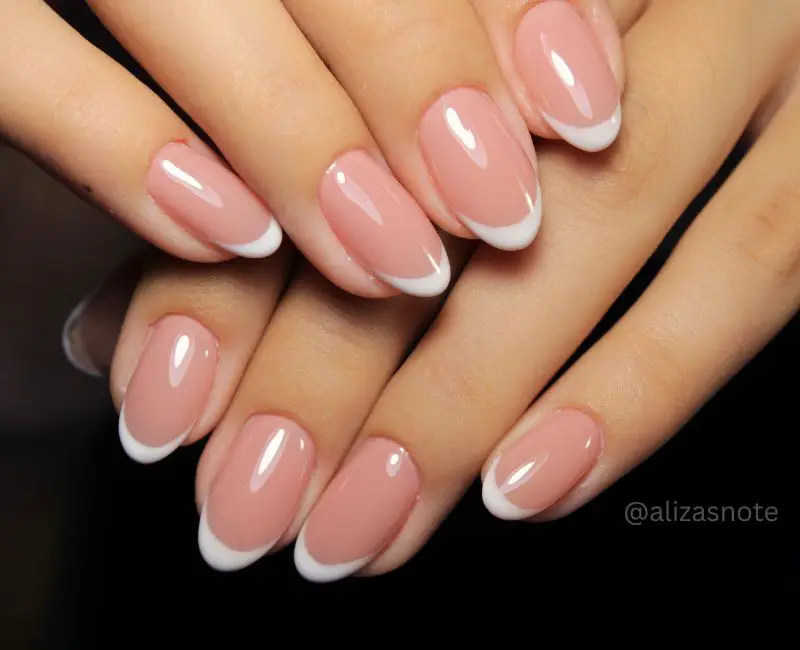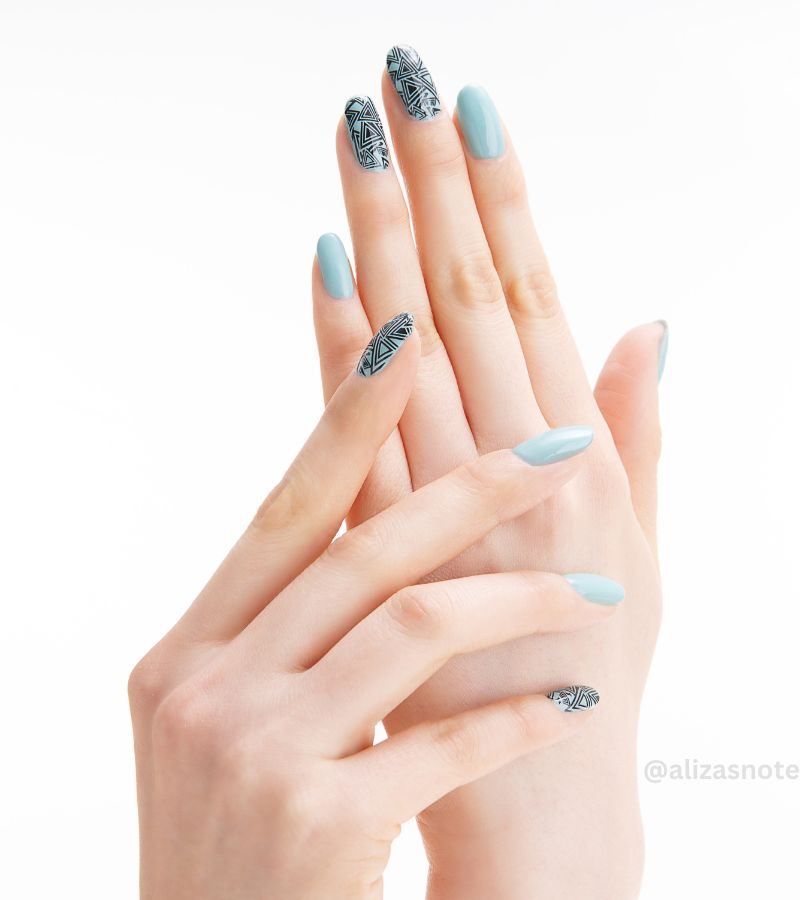Healthy nail beds are essential for vibrant, beautiful nails. Yet, attaining and sustaining them can sometimes feel like a daunting task. Genetics, lifestyle factors, and environmental stressors all impact the condition of our nail beds.
Positioned beneath the nail plate, it is a hub of blood vessels and nerves, supplying vital nutrients for nail growth. Proper hydration and nourishment of this area are crucial for fostering healthy nail growth and preventing common issues like fragility and breakage.
In this guide, we’ll explore actionable strategies about how to get healthy nail beds. Additionally, we’ll highlight common mistakes to steer clear of, such as excessive exposure to harsh chemicals and improper nail care practices, which can jeopardize the health of your nail beds in the long run.
Common Nail Bed Issues:
Nail bed issues can vary in severity, ranging from minor inconveniences to more serious conditions requiring medical attention. Here’s some of breakdown:
1. Ingrown Toenails
When the nail’s edge grows into the surrounding skin, it causes discomfort, redness, and swelling. This often stems from improper nail trimming or wearing tight shoes. Minor cases can be managed at home with warm water soaks and gentle nail edge lifting, while severe cases may necessitate professional intervention to prevent infection.
2. Fungal Infections
Fungi thrive in warm, moist environments, leading to nail bed infections. Symptoms include discolored, thickened, and brittle nails. Treatment typicallycontains antifungal medications, depending on the infection’s severity.
3. Paronychia
An infection of the skin around the nail, usually caused by bacteria or fungi. It results in redness, swelling, and pain. Treatment may involve warm compresses, antibiotics, antifungal medications, and proper wound care.
4. Nail Psoriasis
This chronic autoimmune condition can affect the nails, causing changes such as pitting, ridges, discoloration, and crumbling. Management often involves topical treatments, oral medications, and lifestyle adjustments.
5. Nail Trauma
Injuries to the nail bed, like crushing or slamming a finger, can lead to bruising, bleeding, or nail loss. While nails typically regrow over time, proper wound care and protection are essential to prevent complications.
6. Nail Bed Tumors
Rare but possible, tumors can develop in the nail bed, altering the nail’s appearance. Surgical removal is often necessary for diagnosis and treatment.
7. Onycholysis
When the nail separates from the bed, often starting at the tip and progressing backward. It may result from trauma, infection, allergic reactions, or underlying medical conditions. Treatment varies but may involve keeping the nail clean and dry, avoiding trauma, and addressing any underlying health issues.
N B: If experiencing persistent or severe nail bed issues, seeking medical advice is crucial. Ignoring problems or attempting self-treatment without professional guidance can lead to complications and prolonged discomfort.
How To Get Healthy Nail Beds
Ensuring the health of your nail beds is vital for maintaining strong and beautiful nails. Here are some effective tips concerning how to get healthy nail beds:
- Maintain Cleanliness
Keep your nails clean and dry to prevent bacterial and fungal infections. Regularly wash with soap, ensuring complete drying afterward.
- Trim Nails Correctly
Trim your nails regularly, cutting them straight across to avoid ingrown nails. Use a gentle touch and a nail file to smooth any rough edges.
- Hydrate with Moisturizers
Apply moisturizing cream or oil to your nails and cuticles daily to keep them hydrated and nourished. Look for products containing ingredients like shea butter or vitamin E for added hydration.
- Protective Measures
Wear gloves when handling harsh chemicals or engaging in activities that may damage your nails. Avoid using your nails as tools to prevent injury.
- Adopt a Balanced Diet
Incorporate nutrient-rich foods such as fruits, vegetables, lean proteins, and whole grains into your diet to support nail health from the inside out.
- Stay Hydrated Internally
Drink an adequate amount of water throughout the day to keep your nails hydrated and prevent dryness and brittleness.
- Use Gentle Products
Be mindful of the products you use on your nails, opting for gentle nail polish removers and avoiding harsh chemicals that can dry out or irritate the nail bed.
- Allow Nails to Breathe
Take breaks between manicures and avoid prolonged use of artificial nails to give your nails time to recover and prevent damage.
- Handle Nails with Care
Avoid habits like nail-biting or picking, as they can damage the nail bed and increase the risk of infection. Treat your nails gently during cleaning and grooming.
- Professional Advice
If you notice any signs of nail bed issues such as redness, swelling, or pain, consult a dermatologist or nail technician for proper diagnosis and treatment.
Applying these practices into your nail care routine will help promote the health of your nail beds, leading to stronger, more resilient nails.
Avoiding Common Pitfalls:
Concerning common pitfalls is crucial for achieving success and maintaining overall well-being in life. Here are key areas where pitfalls often arise, along with strategies:
- Goal Setting
Set realistic and specific goals that align with your values and priorities. Break them down into manageable steps and regularly review and adjust them as needed.
- Time Management
Prioritize tasks based on importance and urgency, and use tools like calendars and to-do lists to organize your time effectively. Learn to say no to non-essential commitments to avoid overcommitting.
- Communication
Practice active listening, clarity, and empathy in your communication. Be mindful of your tone and body language, and seek clarification when needed to avoid misunderstandings.
- Decision Making
Gather relevant information, consider potential outcomes, and seek input from others before making decisions. Avoid impulsive or uninformed choices by taking the time to weigh the pros and cons.
- Financial Management
Create a budget to track your finances, prioritize saving and investing, and avoid unnecessary debt. Seek guidance from a financial advisor if needed to ensure financial stability.
- Health and Wellness
Prioritize self-care activities such as exercise, healthy eating, and stress management to maintain physical and mental well-being. Listen to your own feeling and seek professional help If needed.
- Relationships
Invest time and effort into nurturing your relationships with loved ones. Practice active listening, empathy, and appreciation to strengthen connections and resolve conflicts constructively.
- Procrastination
Identify the root causes of your procrastination and develop strategies to overcome them. Break tasks into smaller steps and set deadlines to stay on track and avoid last-minute rushes.
Regular reflection and adjustment will help you stay on course toward your goals.
FAQ:
Q. How to have healthy nail beds?
Keep nails clean, trim them properly, moisturize regularly, avoid nail trauma, eat a balanced diet, and seek professional guidance as needed.
Q. What do unhealthy fingernails look like?
Unhealthy fingernails may show discoloration, brittleness, ridges, pits, or irregular shapes. Signs of infection, such as redness, swelling, or discharge, are also indicators of unhealthy nails.
Q. What steps can I take to prevent ingrown toenails?
To prevent ingrown toenails, trim nails straight across, wear well-fitting shoes, and maintain good foot hygiene. Promptly address any signs of ingrown toenails to prevent complications.
Q. What causes nail fungus, and how is it treated?
Nail fungus is typically caused by fungal infections thriving in warm, moist environments. Treatment options include topical or oral antifungal medications, laser therapy, or, in severe cases, surgical nail removal.
Q. How can I strengthen weak nails prone to breaking?
Weak, brittle nails may result from dryness, nutritional deficiencies, excessive moisture, or underlying health issues. Strengthen nails by moisturizing regularly, avoiding harsh chemicals, protecting them from trauma, and ensuring a nutrient-rich diet.
Last Call:
- Key practices include maintaining cleanliness, trimming nails correctly, moisturizing regularly, and shielding nails from harm. Equally important is adopting a balanced diet rich in essential nutrients to fortify nails from within.
- Note: healthy nail beds are more than just cosmetic; they’re a reflection of your holistic well-being
Read Other Nails Post:
How To Soothe Nails
10 Remedies For Stronger Nails
Call to Action:
- We are eager to insight out through your experiences.
- Join our dynamic Pinterest community, where you can connect with fellow enthusiasts, discover additional nail care tips, and engage in insightful discussions.


